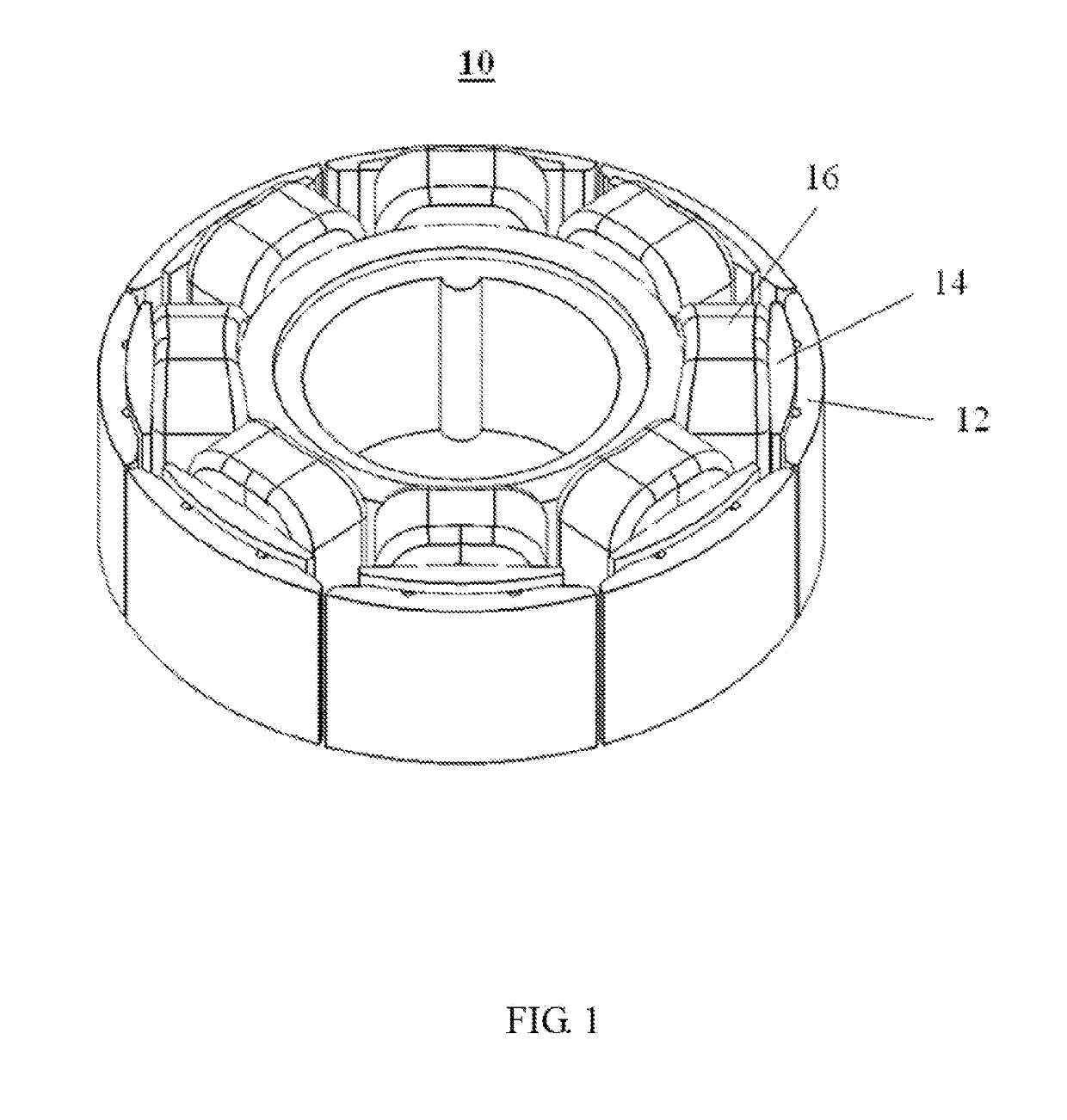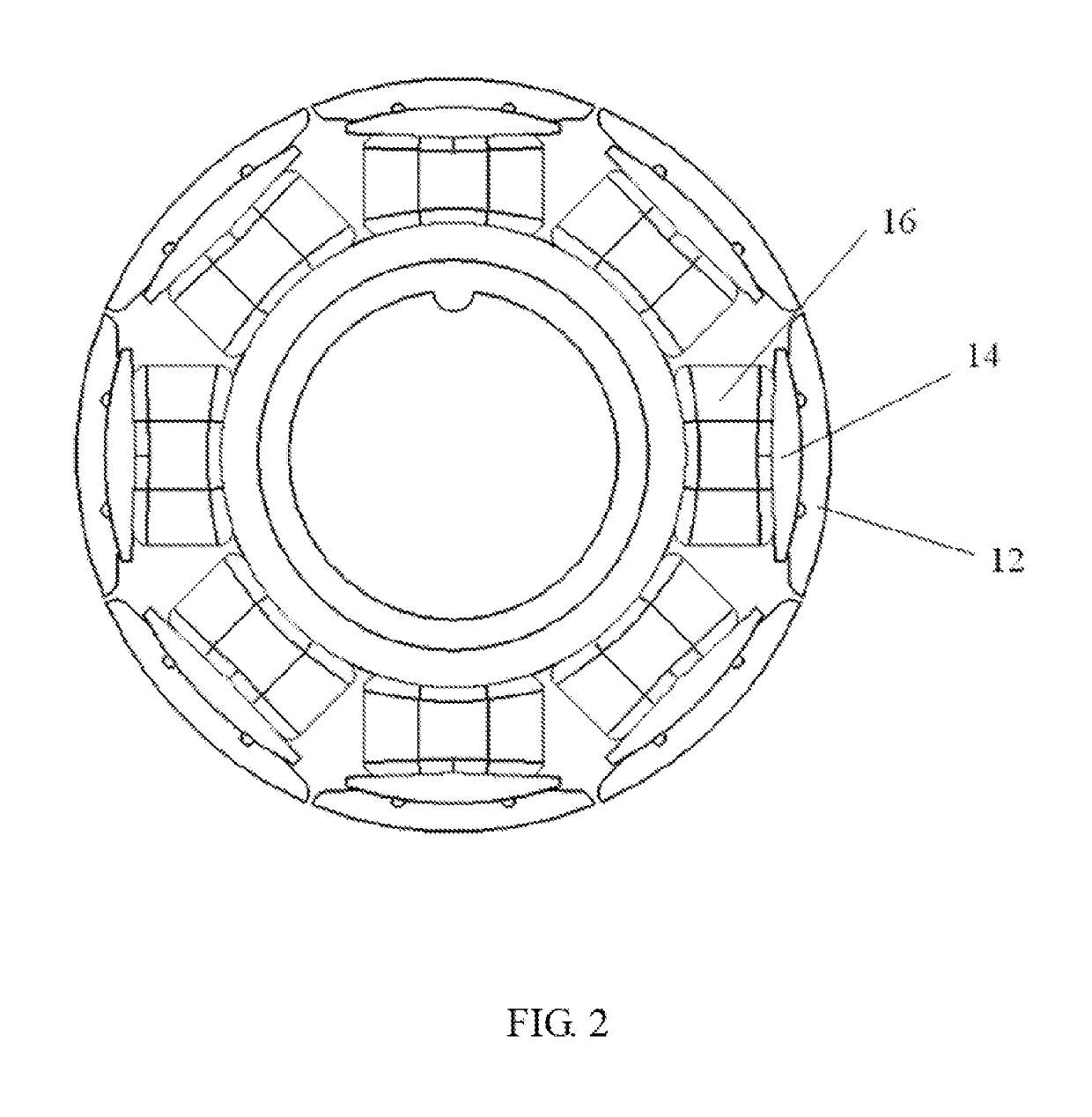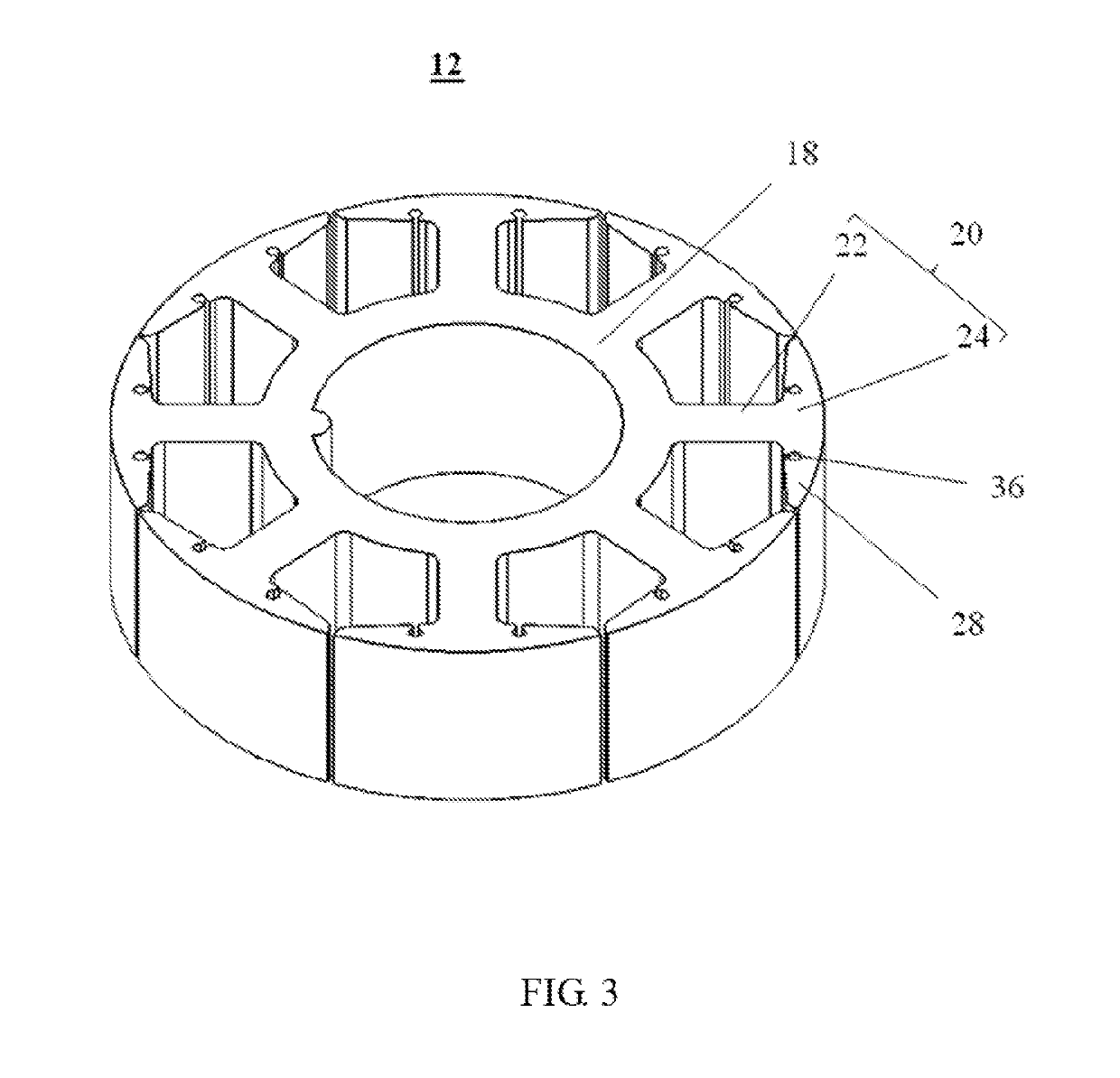Single-phase outer-rotor motor and stator thereof
a single-phase outer-rotor motor and stator technology, applied in the direction of stator/rotor body manufacturing, magnetic circuit rotating parts, magnetic circuit shape/form/construction, etc., can solve the problems of limited stator size, noise, affecting the stability of the rotor during rotation, etc., to facilitate winding, reduce cogging torque, and operate smoothly
- Summary
- Abstract
- Description
- Claims
- Application Information
AI Technical Summary
Benefits of technology
Problems solved by technology
Method used
Image
Examples
first embodiment
[0056]FIG. 1 through FIG. 4 illustrate a stator 10 according to a In this embodiment, the stator 10 includes a stator core 12, an insulating bracket 14 wrapping around the stator core 12, and windings 16 wound around the insulating bracket 14.
[0057]The stator core 12 is made by stacking magnetic-conductive materials such as silicon steel sheets. The stator core 12 includes an annular yoke 18, and a plurality of teeth 20 extending integrally and radially outwardly from an outer edge of the yoke 18. The teeth 20 are evenly disposed along a circumferential direction of the yoke 18. Each tooth 20 includes a tooth body 22 connected with the yoke 18 and a tooth tip 24 formed at a distal end of the tooth body 22. The tooth body 22 extends along a straight line. Preferably, the tooth body 22 extends along a radial direction of the annular yoke 18 A winding slot 26 is formed between each two adjacent tooth bodies 22. The winding slot 26 is generally sector-shaped, having a width gradually i...
second embodiment
[0061]FIG. 7 illustrates a stator core 12 of the stator 10 which is different from the above stator core in that, each tooth tip 24 of the present embodiment forms the cutting groove 36 at only / single one of the wing portions 28. Taking the orientation shown in the figures as an example, each cutting groove 36 is formed in the wing portion 28 on the counterclockwise side of the corresponding tooth body 22. As shown in FIG. 8, prior to the forming of the stator core 12, only the wing portion 28 of the tooth tip 24 on the counterclockwise side of the tooth body 22 is tilted outwardly. Because all the wing portions 28 on the same side of the tooth tips 24 are tilted outwardly, each tilted wing portion 28 and the wing portion 28 of an adjacent tooth tip 24 that is not tilted offset from each other in the circumferential direction, such that the adjacent wing portions 28 can still form a greater distance therebetween for facilitating the winding. After the winding process is completed, ...
third embodiment
[0072]FIG. 21 illustrates the rotor 50 which is different from the embodiment of FIG. 20 mainly in that the permanent magnet 54 is an integral structure in the shape of a closed ring in the circumferential direction. The ring-shaped permanent magnet 54 includes a plurality of sections in the circumferential direction. Each section functions as one magnetic pole of the rotor 50, and adjacent sections have different polarities. Similar to each permanent magnet 54 of the rotor 50 of FIG. 20, each section of the permanent magnet 54 has a thickness progressively decreasing from a circumferential center to two circumferential sides. The inner surface 56 of each section facing the stator 10 is a flat surface. In a radial cross-section as shown in FIG. 21, all sections of the permanent magnet 54 cooperatively form a regular polygonal inner surface of the rotor 50. Similar to the embodiment of FIG. 20, the gap formed between each magnetic pole of the permanent magnet 54 and the outer surfac...
PUM
 Login to View More
Login to View More Abstract
Description
Claims
Application Information
 Login to View More
Login to View More - R&D
- Intellectual Property
- Life Sciences
- Materials
- Tech Scout
- Unparalleled Data Quality
- Higher Quality Content
- 60% Fewer Hallucinations
Browse by: Latest US Patents, China's latest patents, Technical Efficacy Thesaurus, Application Domain, Technology Topic, Popular Technical Reports.
© 2025 PatSnap. All rights reserved.Legal|Privacy policy|Modern Slavery Act Transparency Statement|Sitemap|About US| Contact US: help@patsnap.com



